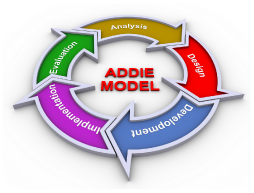

Every employee brings a unique set of skills and insights and potential offerings to their organization. Their real success (the difference between giving 80% and 110%) lies in how others - managers and colleagues can tap into each employee's talents and ideas. Diversity initiatives should bring an excitement...a discovery...that we all have a lot to give each other and in doing so, together, we can bring an organization to tremendous heights. Additionally, we work in a multi-ethnic, cultural, gender and generational society. We must have the skills to work with others who have different beliefs and communication styles.
inSITE has worked with many organizations - its Diversity and Inclusion Councils, its leadership, its management team and employee base to bring forward a culture of valuing diversity and furthering the goals of the strategic plan through diversity.
inSITE has recently been awarded a contract by the Equal Employment Opportunity Commission to provide them with the following services:
We have also delivered programs which have been custom designed to meet the needs or our clients. Here are a few projects that show the wide spectrum of diversity projects and programs we have provided.
Cultivating Diversity & Inclusion
The course introduces front line employees to the issues that commonly arise in a diverse workforce and provides easy-to-use strategies for respectully and effectively working with others. This course engages employees, offers a safe environment for questions and discussion, and provides opportunity for dialog that is needed to move a culture forward.
Inclusion Strategies for 21st Century
This course takes diversity to a new level. Where many diversity-related courses provide only a forum to discuss issues and consider diversity and inclusion concepts, this course adds to the meaningful discussions, several specific tools that leaders should use to lead and manage an inclusive culture. Leaders develop an action plan for these tools as they design a plan to move the culture forward.
Transitioning Toward Inclusion -Effectively Handling Transgender Issues
Both cultural and legal issues exist for transgender issues in the workplace. This course covers the legal and policy issues including bathroom use, dress code, and other issues that management often forgets to consider until it is too late, are all addressed in this informative and engaging workshop.
EEO & Policy Compliance - The EEO Game
Rather than provide a boring review of case law and statutes from previous years, the course provides a board game with scenarios and questions to see who has the best memory and who can best apply the laws to current, typical situations. This course keeps managers and HR professionals abreast of the most recent EEO-related laws and trends in a fun and entertaining manner.
Ensuring a Respectful Workplace 2007 - current
This course offers skills and tools for managers and employees to focus on respect as a philosophical approach to managing and engaging a diverse work force. EEO laws are covered as well.
We delivered a sensitivity training course to employees at all levels of the Baltimore County Fire Department. We custom designed and then delivered this mandatory course to 1000 employees and managers, including senior leadership. The Baltimore County Fire Chief heard such positive feedback about the course, he attended the training himself. He was so impressed with the course that without a request, he offered himself as a reference. Baltimore County Fire Department recognizes the need for their employees to reflect their multiethnic and multicultural community and has taken strides to hire and retain a work force reflective of the community it serves. There are many ethnicities and religions represented in the Fire Department and as a result, there have naturally been some miscommunications and misunderstandings. We delivered training that addressed these concerns and gave employees the tools to better appreciate, understand, and work with people of other cultures, genders, ages, and ethnicities (both internal and external), and provide managers the skills to coach and manage these issues proactively.
Royal Ordinance, a company in Manchester England, founded in the 1600's, requested training for 40 of their employees before sending them to the United States. Management recognized that although we speak the same language, their success hinged on understanding and adapting to our culture. We designed this course, beginning with an understanding of their culture and then developing the tools and exercises to increase their awareness of how best to communicate and develop working relationships that ensure success in the U.S.

The course developed for SRA International (named one of the 100 best companies to work for in America) has been cited in several periodicals, including the Wall Street Journal. They recognized that to hire the best talent, they needed to hire employees from a variety of backgrounds. For many of the employees, English was a second language. Many employees were first or second generation immigrants with strong ties to various cultures, countries, and religions which may be misunderstood by Americans. Our training helped them address potential issues, develop a dialogue when misunderstandings occurred, and recognize how to use their diversity as a strategic asset. Leadership at SRA often cited their diverse work force and our course as one of the primary reasons they were named one of the best companies to work for in America.
A manager's role may appear more difficult when the work force is diverse. However, there is value in diversity and when managed properly, a diverse work force provides more new ideas, unique means of problem solving, enhanced quality, and is a true asset to company productivity and bottom line. When not managed properly, hidden talents may be untapped, morale may be low and internal camps might not work well together. This course provides managers at every level with the philosophy and tools to foster employee growth and acceptance in a multi-cultural setting. It provides a definition and multiple examples of micro-inequities and provides managers and supervisors a safe environment to explore some of the potential micro-inequities that are occurring in their work area and then offers them the skills and tools to prevent and handle them.
A Few Key Objective:

Employees are more productive and work in a healthy environment when diversity issues are managed well at every level, including employee to employee interactions. This course, Becoming your Best in a Multicultural Environment, looks at assumptions we have about others and how those assumptions guide our behaviors negatively. The course also explores how we often become too sensitive to the behavior of others; sometimes misreading intentions or not addressing inappropriate behaviors in a positive ways. This course provides skills for improved communication and interactions as well as addressing others with delicate issues.
A Few Key Objectives:
The program we would design for your organization would be created based on your issues and needs. Every company has differing needs, goals, agendas, and even levels of interest. Diversity training must match the company culture and requirements. Some companies are focused more on the legal aspect of diversity, others seek improved communication among employees and others recognize the need to break down barriers to develop teamwork. All courses should focus on the value added to an organization when the work place is diverse. We need to find out more about your organizational culture and needs before seriously addressing course objectives or a final outline.
Many situations could be construed as sexual harassment, but to determine if a dangerous behavior is in fact harassment, we need to study the law prohibiting sexual harassment however that law is so vague, many interpretations exist. This course discusses the need for respect in the workplace and focuses on personal, business and legal implications of sexual harassment. Managers will be given strategies for handling complaints and creating an environment free from harassment.
Key Course Objectives:

Once managers and employees have the skills, tools, and reminders to create and maintain a workplace here employees feel appreciated and respected, they often become loyal, trusted partners with management and the organization. This course provides managers with the skills and strategies to hire, develop, coach, evaluate and even fire employees in a manner which motivates, promotes productivity, values individuals and develops teams.
Key Course Objectives:

Although hearing is automatic, listening is a definitive skill, without which we cannot succeed in business. This course focuses on both the basics and complexities of listening.
Key Course Objectives:
Participants will gain insight into how others "hear" their verbal and electronic communications, improve their ability to ensure their communications are heard as they intended, and develop their skills in understanding others' intended communication --even when other people may not have strong interpersonal communication skills. Language and cultural barriers will be explored as well as proper methods for giving and receiving feedback. As a capstone exercise, participants with a partner, will develop a detailed strategy for a difficult conversation, (perhaps one they have avoided), applying the tools for the course, and practice delivery of the conversation.
Key Course Objectives:
We do this every day. In fact, most of our waking hours are spent communicating without saying a word. Our body language says, "I'm too busy to talk to you." Our facial expression says, "For Goodness Sake, NOT now." Our posture says, "I am going to let you walk all over me in this negotiation." Understanding our own body language, our "tells" and our unconscious but obvious non-verbal communication is unveiled in this highly interactive and introspective course. We also provide strategies for better interpreting others' body language, spatial distance, cultural norms and other communications that don't say a word.
Key Course Objectives:

The course provides participants an analytical framework useful in identifying and resolving real-world appropriations law issues arising in their own work. The course focuses on the availability of appropriations as to purpose, amount, and time, particularly as these concepts apply to government contracts. It also explains:
For Contracting Officers and COTRs, there are times when writing performance work statements will give a much better value to the government than developing statements of work. This course focuses on the difference between the two and helps the CO determine when it is most advantageous to use each one. The course also provides the components of a well written Performance Work Statement.
Key Course Objectives:

This course focuses on the differences between coaching, mentoring and modeling roles, and provides guidance for managers and colleagues to take on any of these strategies and responsibilities. It is essential for self-development to know which resources to seek.
Key Course Objectives:
This course covers the topic of change management from several perspectives (organizational, psychological, physical, team) so that employees can understand why they have difficulties accepting change and can determine how they can take better control of their actions. There are two versions of this course, one for management/supervisors and one for employees. Each has their own unique goals and objectives to best suit the audience. It provides managers with the tools and skills necessary to recognize what prevents them and their staff from accepting change and offers a strategy for working through new challenges. Managers will learn how to become change agents, interpret the physiological symptoms of resistance to change, and build a plan and work through changes in a positive and productive manner.
Key Course Objectives:
Whether your department has a strategic plan or not, this course provides the tools for any manager to design and follow a strategic plan which turns crises into manageable planned events. Current methods of goal setting, creating deadlines and tying employee performance to goals will be incorporated into the design of the organization's new strategic plan.
Key Course Objectives:
As more is expected of managers each year, it has become essential that employees have the skills and motivation to take on new challenges. In this course, participants will explore tools and skills for delegating, empowering and encouraging others to take on more responsibility and produce greater results.
Key Course Objectives:

This two to three day course provides an overview of the types of issues facing a manager today and provides strategies for dealing with those issues. The course focuses on traditional management functions, but explains how a manager must approach these functions differently because of our changing environment. Leadership and change agent strategies are employed with each management function, providing employee expectations, coaching and empowering, and evaluating and helping employees plan for their growth.
Key Course Objectives:
To be successful today, managers must demonstrate leadership in their decisions and in communication with staff and senior management. This course introduces managers to a six-step model for leadership which provides tangible, realistic action steps to increase leadership impact. This is a course on the leadership traits necessary to manage processes and create a positive work environment which assists people in becoming their best.
Key Course Objectives:
New supervisors have an additional difficult role in that, because they are new, their authority is often tested and some employees are resentful of the selection of the new supervisor. An effective supervisor develops individual relationships which foster employee commitment, creativity, and desire to achieve high expectations. This course helps supervisors let go doing the job and take on the more challenging role of supervising others' performance, as well as developing effective communication skills, and learning to delegate, coach and provide feedback.
Key Course Objectives:
Team work at all levels has proven to drive down costs, increase communication and generate new ideas which meet and exceed organizational goals. This course enables participants to recognize different styles and mind sets that both help and hinder contributions to a team, as well as examining their role in achieving team outcomes, their communication style in a team environment and their coaching techniques to bring out the best from each team member.
Key Course Objectives:
When managed properly, a diverse workforce provides more new ideas, unique means of problem-solving, enhanced quality, and is a true asset to company productivity and bottom line. When not managed properly, hidden talents may be untapped, morale may be low and internal camps may not work well together. This course provides managers at every level with the philosophy and tools to foster employee growth and acceptance in a multi-cultural setting.
Key Course Objectives:

This course provides a three-tiered approach to managing the stress of a hectic work and personal life. Using prevention strategies, participants will understand their personal causes of stress, receive tools and strategies for dealing with stress, create a system as a proactive approach to stress management, and learn how to diffuse people who have "lost it".
Key Course Objectives:

It is past time to develop a comprehensive plan for managing stress, time and priorities. This half day workshop provides tools, skills and practice for managing multiple priorities, deadlines and competing interests. Participants will learn strategies to increase productivity and maximize performance. The focus will include establishing processes to expedite assignments from self and others; minimizing the negative impact of uncontrollable situations or issues; and identifying solutions to performance hampering practices. The participant will move from a "To Do List" mentality which competes with time to a "Prioritization System" which partners with time. Tools for managing the accompanying stress and pressures are also covered.
Key Course Objectives:
Meetings can be the most efficient, effective and enjoyable method of resolving problems, dealing with changes, disseminating information, generating ideas, or planning strategies and goals. This course provides an action plan on the design of meetings, meeting roles, creating a team environment, improving communication, enhancing the quality and efficacy of participation, and enhancing creativity. Whether someone is a participant or a leader, this course will enhance their ability to design and deliver effective group meetings.
Key Course Objectives:
text inSITE will develop questions that reflect the areas of development for your executives, managers or employees through use of standard competencies as well as areas identified specific to your organization. We understand that standard questions may not provide the measurements you seeking to improve. We will custom develop questions based on the competencies you want to evaluate, your culture, industry and business strategies. inSITE will handle all aspects of administration of the 360° assessments including communication to the learner and their raters, sending out reminders, and fielding questions.
Once inSITE consultants have worked with your organization to determine the competencies, and have developed specific and measurable behaviors, those behaviors will be formulated into 360° assessment questions. In this way, we know that the 360° assessment is directly linked to the organizational goals and the behaviors that learners need to demonstrate to meet the strategic plan and to be successful leaders in your organization.
inSITE provides a coaching debrief with learners when providing their reports to them. Many learners only look at the negative responses and without proper guidance can become consumed by low scores or a particular comment. Our coaches help ready the learners for their report and work with them initially to accept and benefit from it. We also introduce our Leadership Development Plan (LDP). This document is provided to learners as the catalyst to begin their development. They will be led to select two to three competencies for development. We encourage learners to consider their strengths, their potential derailers and balance individual competencies with the needs of the organization.
When the 360° Assessment is accompanied by coaching or a leadership developmental program, we also recommend a post-360° assessment to evaluate the growth and learning in a measurable way.

As a professional, you may be called upon to lead one or more projects in addition to your regular job tasks and management responsibilities. Projects must be led through all phases of a project lifecycle to be successful: initiating, planning, executing, monitoring/controlling, and closing.
This course focuses on the more difficult aspects of project management including getting tasks accomplished when resources are lacking, maintaining commitment from team members who do not report to you, effectively handling the ups and downs of a project when leadership loses interest and influencing all stakeholders involved.
You will leave with a system to develop an achievable objective, a comprehensive action plan to produce a deliverable, tools to control your project from start to finish, and a clear idea of how to create and lead a team.
Key Course Objectives:
As a professional, you may be called upon to lead one or more projects in addition to your regular job tasks and management responsibilities. Projects must be led through all phases of a project lifecycle to be successful: initiating, planning, executing, monitoring/controlling, and closing. The tools to handle all tasks of these phases can be completed and tracked using Microsoft Project.
This course focuses on the project management concepts, strategies and accompanying tools to run any project.
Key Course Objectives:

This course gives a brief overview of the basics of project management and then focuses on the issues that can cause projects to derail. Strategies for keeping leadership committed to resources and direction are covered. The course provides an action plan for engaging project members and keeping them to meeting their tasks and deadlines even when they do not report to you. The course also covers team dynamic issues and getting stakeholders on your side. Tools and tips for keeping everyone on the same page, introducing change and redirecting work are also covered.
Key Course Objectives:
One of the greatest detriments to success in business today is group think. People trust each other's judgment so when someone has an idea that sounds good, everyone agrees without having research, strategies or justification to back it up. This course provides a step-by-step process and tools for making decisions alone or in a group, determining problem causes, evaluating alternatives, narrowing to one proposed solution, and implementing a pilot program.
Key Course Objectives:
This course provides project managers and Team Leaders with the skills and tools needed to assess individuals' growth and feedback needs and tailor management styles to the needs of each employee. The course focuses on methods for leading employees into new ventures and nurturing their ability to generate and implement ideas.
Key Course Objectives:

Performance is no longer seen as individual; it is the combined contributions of people working toward a common goal. A successful employee in today's working world is a contributing team member who generates ideas, works collaboratively with colleagues toward joint expectations, and to achieve change. This course enables participants to recognize different styles and mind sets that both help and hinder contributions in a team environment, and how to affect change throughout the college.
Key Course Objectives:
Team work at all levels has proven to drive down costs, increase communication and generate new ideas which meet and exceed organizational goals. This course enables participants to recognize different styles and mind sets that both help and hinder contributions to a team, as well as examining their role in achieving team outcomes, their communication style in a team environment and their coaching techniques to bring out the best from each team member.
Key Course Objectives:
Meetings can be the most efficient, effective and enjoyable method of resolving problems, dealing with changes, disseminating information, generating ideas, or planning strategies and goals. This course provides an action plan on the design of meetings, meeting roles, creating a team environment, improving communication, enhancing the quality and efficacy of participation, and enhancing creativity. Whether someone is a participant or a leader, this course will enhance their ability to design and deliver effective group meetings.
Key Course Objectives:

Professionals at all levels are being asked to present their ideas to colleagues, management, and internal clients. This course focuses on advanced preparation, capturing audience attention, helping audiences retain important information, and matching the presentation to audience goals. Participants will learn to transform technical jargon to convincing language, design creative openings and influential closings, and be mindful of tone, body language and pace, among other things that make a presentation come alive.
Key Course Objectives:
In today's media-hyped world, you always have the potential to be interviewed on the work that you do. You may think your job or industry is not newsworthy but when an event of interest occurs that intersects with your work, it doesn't matter if you are an accountant, programmer or Project Manager, there is always a possibility of being interviewed. Whether it is an impromptu reporter that approaches you while you are at a conference or other event, a phone call from a Media outlet with a political spin, or your desire to use the Media to market an event or to gain support for your program, your preparedness can make the difference between positive press coverage and an absolute disaster.
This course provides the skills and practice to be prepared for these situations, to provide your soundbite while answering their question, to make your points more interesting to the Media, and to avoid hazardous Media traps. A professional Media Consultant will work with you to prepare you for social media, print, radio and television opportunities so that your message is clear, positive, and influential.
Key Course Objectives:
Whether you are presenting your idea to an internal team, an external audience, or an executive, your ability to present is as important as the message you need to convey. We will provide strategies and you will practice briefings that provide a presence that shows confidence, clarity of message, professionalism, and comfort with public speaking. You will have an opportunity to prepare and practice a briefing, and the option of videotaping and critique in this one day course.
Key Course Objectives:
Good brief writing is powerful writing. Yet, so many writers feel powerless when they convert their thoughts to words on paper, especially when the audience is senior leadership. Taking research, program progress and other components and developing them into clear, high level briefings can seem an overwhelming task. This course breaks down both the components of an effective briefing as well as the objectives to make brief writing simple and powerful. Whether we're trying to inform, instruct, analyze or persuade, the primary goal is to communicate the message. This course provides the strategies to prepare a briefing in your organization's format that targets what leadership needs to say, what audiences expect to hear and what you know as the critical message that needs to be understood. Through this workshop you will develop sensitivity to time, political issues, clarity of message and the goals of both presenter and audience.
Key Course Objectives:

This course covers the topic of change management from several perspectives (organizational, psychological, physical, team) so that employees can understand why they have difficulties accepting change and can determine how they can take better control of their actions. There are two versions of this course, one for management/supervisors and one for employees. Each has their own unique goals and objectives to best suit the audience. It provides employees with the tools and skills necessary to recognize what prevents them from accepting change and offers a strategy for working through new challenges. Employees will learn influence, coping mechanisms, to self-motivate, and how to become change agents.
Key Course Objectives:

This class is designed to open us up to the creativity that exists in us and provides workplace strategies to demonstrate improved creativity in problem solving, decision making, and mutual collaboration.
Key Course Objectives:
There are times in everyone's life when personal and family matters change so drastically, the impact is felt in every aspect of our life. This course is designed to educate employees on the physical and emotional changes that occur in our bodies in times of such crisis, and provide employees with concrete tools and strategies to develop a comprehensive coping plan.
Key Course Objectives:

To effect change in performance, training must be linked to performance outcomes, match training modules to employee skill and knowledge level, and provide appropriate learning strategies. This three-part course focuses on ISD principles, adult learning theory, strategies to gain and hold participant attention, and the stand-up presentation (implementation).
Key Course Objectives:
This course first provides a model for creating a system of accountability at the department level, and then managers learn how to link the departmental system to the organizational strategic plan. Managers are provided with the tools and skills to create accountability at the individual performer level, and how to communicate needed accountability in a clear, measureable and motivational manner.
Key Course Objectives:
Change is occurring at all levels of an organization, and without the skills to cope with changes and strategies to become a proactive change agent, employees lose confidence, motivation and productivity. This course provides managers with the tools and skills to recognize what prevents them and their staff from accepting change and offers a strategy for working through new challenges as a change agent.
Key Course Objectives:
In this course, participants will evaluate their own style of leadership and recognize the indicators in an organization that signal that the landscape is ready for them to step up as a leader. Participants will be provided with strategies and skills to risk taking, creative problem solving, coaching, mentoring and organizing, among others.
Key Course Objectives:
Meetings can be the most efficient, effective and enjoyable method of resolving problems, dealing with changes, disseminating information, generating ideas, or planning strategies and goals. This course provides an action plan on the design of meetings, meeting roles, creating a team environment, improving communication, enhancing the quality and efficacy of participation, and enhancing creativity. Whether someone is a participant or a leader, this course will enhance their ability to design and deliver effective group meetings.
Key Course Objectives:
This course provides project managers and Team Leaders with the skills and tools needed to assess individuals' growth and feedback needs and tailor management styles to the needs of each employee. The course focuses on methods for leading employees into new ventures and nurturing their ability to generate and implement ideas.
Key Course Objectives:
In today's society, people are only effective if they can work their way successfully through disagreements, new ideas and issues which appear to have more than one truth. This course provides employees with the tools and skills to build positive relationships and resolve conflicts with internal and external customers, individuals and teams. Participants will be given an opportunity to apply these new skills and techniques to their particular working environments and develop strategies to deal with a negative relationship, a resistant or complaining attitude, and people who do not accept new ideas.
Key Course Objectives:
Professionals at all levels are being asked to present their ideas to colleagues, management, and internal clients. This course focuses on advanced preparation, capturing audience attention, helping audiences retain important information, and matching the presentation to audience goals. Participants will learn to transform technical jargon to convincing language, design creative openings and influential closings, and be mindful of tone, body language and pace, among other things that make a presentation come alive.
Key Course Objectives:

One of the greatest detriments to success in business today is group think. People trust each other's judgment so when someone has an idea that sounds good, everyone agrees without having research, strategies or justification to back it up. This course provides a step-by-step process and tools for making decisions alone or in a group, determining problem causes, evaluating alternatives, narrowing to one proposed solution, and implementing a pilot program.
Key Course Objectives:

The use of negotiation and influence strategies in today's working world are essential to remarkably enhance your organization's effectiveness. In this course, participants will learn to effectively negotiate with employees, customers and management, while using time, power and planning to your advantage.
Key Course Objectives:
Once managers and employees have the skills, tools, and reminders to create and maintain a workplace here employees feel appreciated and respected, they often become loyal, trusted partners with management and the organization. This course provides managers with the skills and strategies to hire, develop, coach, evaluate and even fire employees in a manner which motivates, promotes productivity, values individuals and develops teams.
Key Course Objectives:
This course covers the topic of change management from several perspectives (organizational, psychological, physical, and team) so that employees can understand why they have difficulties accepting change and can determine ho they can take better control of their reactions during times of major career and life changes. This course is based on many Change Experts findings, and provides employees with the tools and skills necessary to accept change, work through new challenges, and how to cope with positive changes, unexpected changes, and those that appear to hinder progress.
Key Course Objectives:
This course defines and explains the intangibles of professionalism so all employees can compete on a level playing field. The course covers the five components of professionalism and provides tools and skills to bring those concepts to life.
Key Course Objectives:
Life long learning no longer means going back to school or taking workplace courses; with the changing dynamics of the workplace, we need to have a comprehensive system for continual development and learning in order to keep pace. This course provides individuals with the understanding of life long learning and presents a strategy to overcome complacency, fear, time constraints and other obstacles so that life long learning becomes part of the participants lifestyle. Participants will learn how adults learn, uncover their own learning styles, and learn new vehicles for learning and how to implement them in their own lives.
Key Course Objectives:

Customer service goes well beyond courtesy and smiling; the philosophy and culture of the organization must reflect customer service principles. This course introduces participants to the philosophy and expected behaviors that collectively create this culture. This is a one day, hands on, high energy workshop which offers skills, tools and practical application for working effectively with internal and external customers.
Key Course Objectives:
Many situations could be construed as sexual harassment, but to determine if a dangerous behavior is in fact harassment, we need to study the law prohibiting sexual harassment however that law is so vague, many interpretations exist. This course discusses the need for respect in the workplace and focuses on personal, business and legal implications of sexual harassment. Managers will be given strategies for handling complaints and creating an environment free from harassment.
Key Course Objectives:

One out of every four employees will be somehow impacted by violence or criminal activity in the workplace This course focuses on identifying potentially threatening behaviors and environments taking preventative actions to thwart violent situations before they are even considered, and handling emergencies with a cool head to reduce the potential of violence and keep everyone safe.
Key Course Objectives:
Every employee can be more productive if they know Microsoft Applications. Most of us learned these Aps through trial and error, and as a result waste time and energy when we don't know the best way to do something. These Microsoft courses streamline learning to make the day spent in training useful. Microsoft certified trainers use games and projects to increase the transfer of learning and make the training fun and worth the time spent. Courses include Microsoft Project, Word I & II, Excel I, II, III, Outlook I & II, and PowerPoint I & II.